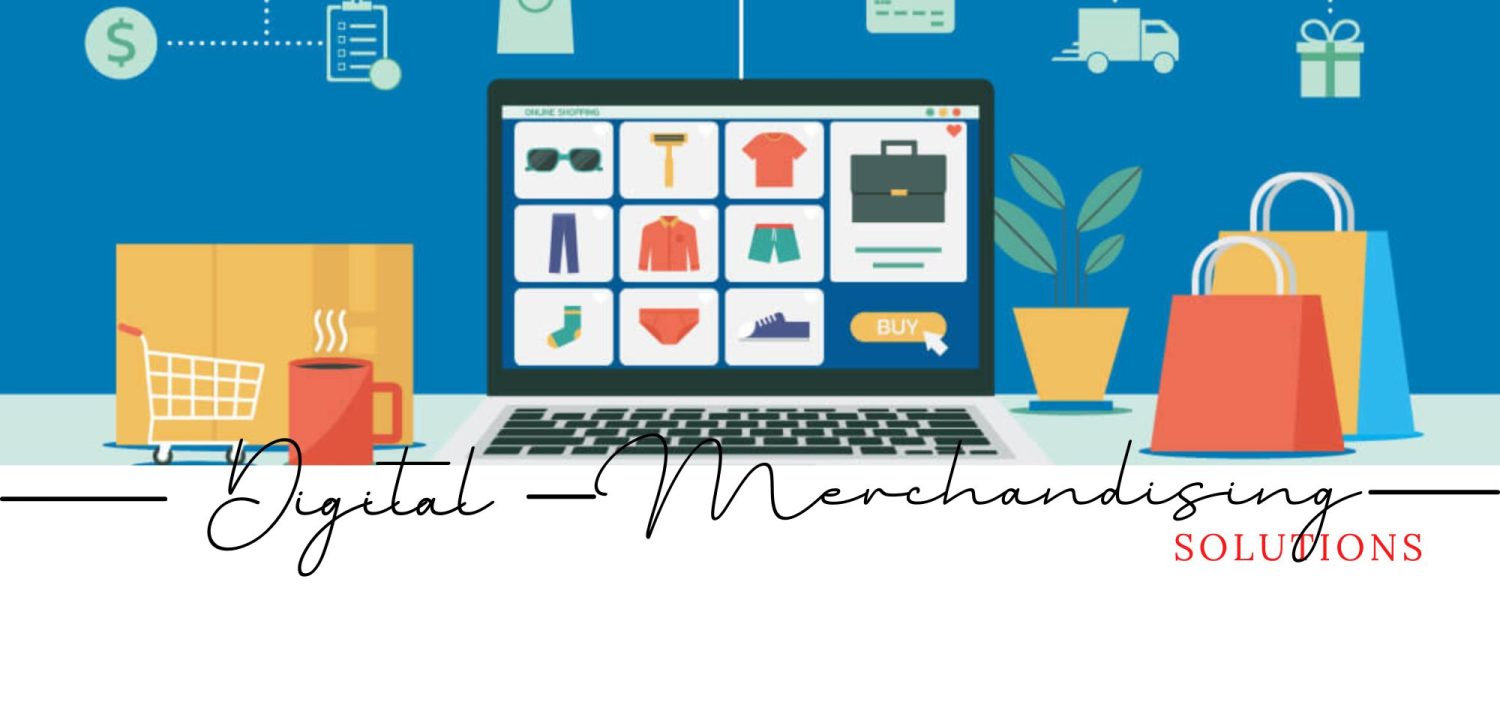Digital Merchandising Solutions
Digital merchandising solutions refer to the use of technology and digital tools to enhance the marketing and sales of products or services. These solutions can include various techniques and strategies, such as online advertising, social media marketing, email marketing, content marketing, and search engine optimization (SEO).
Digital merchandising solutions also involve the use of software and applications that can help retailers and businesses to manage and analyze their sales data, inventory, customer behavior, and other key metrics. These tools can include customer relationship management (CRM) software, e-commerce platforms, data analytics software, and point-of-sale (POS) systems.
Digital merchandising solutions are becoming increasingly important for businesses as more consumers shift towards online shopping and e-commerce. With the right digital tools and strategies, businesses can effectively reach and engage their target audience, optimize their sales and marketing efforts, and ultimately drive more revenue and growth.
Digital Merchandising Solutions
Digital merchandising solutions are becoming increasingly popular as retailers look for new ways to improve their customer experience and boost sales. With the rise of e-commerce and mobile shopping, digital merchandising has become a critical component of any successful retail strategy.
Digital merchandising solutions use technology to enhance the in-store experience for customers, often by providing interactive displays and personalized recommendations. Here are some of the key benefits of digital merchandising solutions:
- Increased Sales: Digital merchandising solutions can help drive sales by providing customers with personalized recommendations based on their browsing and purchasing history. This can lead to increased customer engagement and higher conversion rates.
- Improved Customer Experience: By providing interactive displays and personalized recommendations, digital merchandising solutions can enhance the overall customer experience and make shopping more enjoyable and convenient.
- Enhanced Branding: Digital merchandising solutions can help retailers showcase their brand and products in a more engaging and memorable way. This can help build brand loyalty and increase customer retention.
- Real-Time Analytics: Many digital merchandising solutions offer real-time analytics and reporting, which can help retailers track performance and make data-driven decisions to optimize their merchandising strategy.
There are a variety of digital merchandising solutions available on the market, including interactive displays, augmented reality, virtual reality, and digital signage. Some of the most popular solutions include:
- Interactive Displays: Interactive displays allow customers to engage with products in a more immersive and interactive way. This can include touch screens, motion sensors, and other interactive elements.
- Augmented Reality: Augmented reality technology allows customers to see virtual images overlaid onto the real world. This can be used to provide virtual try-ons or to showcase products in a more engaging way.
- Virtual Reality: Virtual reality technology allows customers to immerse themselves in a virtual environment and interact with products in a more immersive way. This can be used to provide virtual try-ons or to showcase products in a more engaging way.
- Digital Signage: Digital signage can be used to display dynamic content and messaging, including product information, promotions, and branding. This can be a cost-effective way to enhance the in-store experience and improve customer engagement.
Digital merchandising solutions are a powerful tool for retailers looking to enhance the in-store experience and drive sales. By leveraging technology to provide personalized recommendations and interactive displays, retailers can create a more engaging and memorable shopping experience for customers, ultimately leading to increased sales and customer loyalty.
Top Examples of Digital Solutions
Digital solutions are increasingly being used by retailers to enhance their marketing and merchandising strategies. Here are some top examples of digital solutions in the retail industry:
- Augmented Reality: Retailers can use AR to allow customers to virtually try on clothing and accessories before purchasing. This technology creates an interactive and engaging experience for customers, which can lead to increased sales.
- Digital Signage: Digital signage is a powerful tool for retailers to showcase their products and promotions. These displays can be used to provide product information, highlight promotions and sales, and create a visually stunning shopping experience.
- Mobile Apps: Mobile apps are an effective way for retailers to reach customers and provide a personalized shopping experience. Retailers can use apps to offer promotions and discounts, track customer behavior and preferences, and send targeted messages and recommendations.
- Social Media: Social media platforms like Instagram and Facebook have become key channels for retailers to connect with customers and build brand awareness. Retailers can use social media to showcase their products, engage with customers, and drive sales.
- Beacons: Beacons are small Bluetooth devices that retailers can use to send personalized messages to customers’ smartphones as they walk through the store. These messages can include personalized promotions, product recommendations, and other relevant information.
- Virtual Reality: Virtual reality technology can be used by retailers to create immersive experiences for customers. Retailers can use VR to showcase products, offer virtual tours of stores, and create interactive displays.
- AI-Powered Chatbots: AI-powered chatbots can be used by retailers to provide instant customer support and assistance. Chatbots can help customers find products, answer questions, and provide recommendations, which can improve customer satisfaction and increase sales.
- In-Store Analytics: In-store analytics tools can provide retailers with insights into customer behavior, preferences, and buying patterns. This data can be used to optimize store layouts, product placements, and promotional strategies to improve sales and customer satisfaction.
Overall, these digital solutions are just some of the many ways that retailers can improve their marketing and merchandising strategies, providing a better shopping experience for customers and driving sales.
Worst Examples of Digital Merchandising Solutions
There are several examples of poor digital merchandising solutions, including:
- Poor User Experience: Websites that are difficult to navigate, slow-loading, or have poor design can discourage customers from making purchases.
- Overuse of Pop-Ups: Pop-up ads can be intrusive and annoying, leading to a negative user experience and decreased engagement.
- Lack of Personalization: Consumers expect personalized experiences, and failing to provide them can result in decreased engagement and sales.
- Inaccurate or Incomplete Product Information: Failing to provide accurate or complete information about products can lead to confusion and decreased trust in the brand.
- Lack of Integration: Failing to integrate digital merchandising solutions with other systems and platforms can result in siloed data and missed opportunities for optimization.
- Lack of Mobile Optimization: With more consumers using mobile devices for shopping, failing to optimize for mobile can result in a poor user experience and decreased engagement.
Overall, digital merchandising solutions need to prioritize the user experience, personalization, accuracy of product information, integration with other systems, and mobile optimization to be effective.




